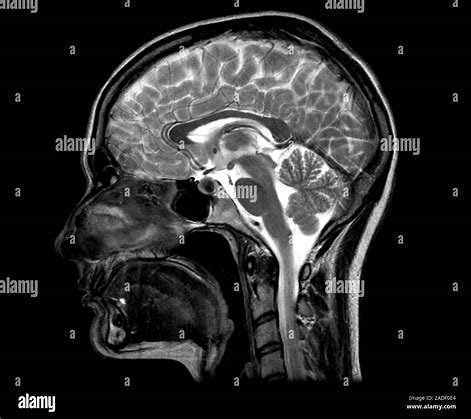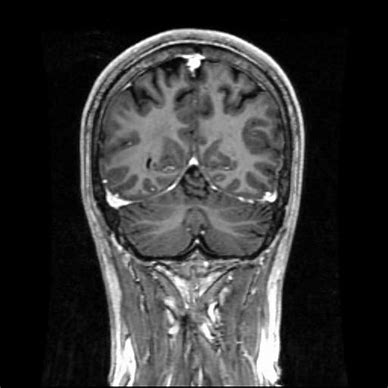anatomy test 1
1/112
There's no tags or description
Looks like no tags are added yet.
Name | Mastery | Learn | Test | Matching | Spaced |
|---|
No study sessions yet.
113 Terms
anatomy
the study of structure or organs and the relations of their parts (WHAT is WHERE?)
physiology
science dealing with the function of living organs
(HOW does it WORK?)
sagittal plane
divides body into left and right sides
coronal plane
divides body into anterior and posterior portions
horizontal plane
divides the body into upper and lower portions (aka traverse or axial plane)
mid sagittal plane
what kind of plane is being seen?

coronal
what kind of plane is being seen?

transverse/transaxial
what kind of plane is being seen?

ipsilateral
“of the same side”
contralateral
“of the opposite side”
unilateral
“of only one side”
bilateral
“of two sides”
anterior
“in front of”
posterior
“in the back of”
ventral
tummy side of body
dorsal
toward the back of the body
coronal
anterior/posterior sections resulted from a cut on the _______ plane
superior
“above”
inferior
“below, under”
axial
superior/inferior sections resulted from a cut on the ______ plane
rostral
toward the head or superior end of the body
caudal
toward the tail or inferior end of the body
medial
any part which is nearer to the center of the body
lateral
away from the midline of the body
sagittal
medial or lateral sections are resulted from a cut on the _____ plane
proximal
closer to a structure
distal
farther from a structure
respiration > phonation > articulation > resonance > nervous
what are the 5 systems for speech production?
afferent
moving towards CNS
efferent
moving away from CNS
respiration
breathing for speech production (lungs, diaphragm, rib cage, trachea)
phonation
production of sound through vibration of vocal cords (larynx)
articulation
formation of speech sounds using articulators (tongue, lips, palate, etc)
resonance
modification of speech sounds through resonating cavities (nasal and oral cavities)
nervous
control and coordination of speech processes by the nervous system (brain)
knowledge
what does language have to do with?
a neuromuscular event, production of voice and phonemes for verbal communication based upon neuromuscular processes
what is speech?
describes speech production as a two stage process involving the generation of a sound source at the larynx level and filtering (or shaping) of the source sound using the articulatory and resonance properties of the vocal tract.
describe the source filter theory
buzzing sound at the larynx level
what structure corresponds to the source? (in the source filter theory)
your entire vocal tract (oral cavity, nasal cavity)
what structure functions as the filter?
2%
the brain takes up only ___ % of the body weight
3 lbs
what is the average weight of the brain of adults?
15% of the cardiac output
how much blood does the brain receive from the heart?
750-1000 ml
how much blood reaches the brain every minute?
20%
the brain consumes ___ % of the available oxygen in the body
20-25%
the brain consumes ___ % of the total body glucose
the cerebrum, cerebellum, brainstem, diencephalon (thalamus & hypothalamus)
what are the 4 main parts of the brain?
language, speech, cognition, sensory/motor processing
what higher brain functions is the cerebrum responsible for?
movement and balance
what does the cerebellum coordinate?
basic life functions (breathing and heart rate)
what does the brainstem control?
The blood contains red blood cells, which carry oxygen, and glucose, which is a form of blood sugar. Glucose combines with oxygen to produce the very important excitatory neurotransmitter glutamate in the brain. All high cognitive functions in the brain, such as language, memory, and judgment, are carried out using this glutamate. Therefore, if oxygen is blocked, brain function itself becomes impossible and neuron will be killed within 2-3 minutes of oxygen deprivation.
why do we need constant blood supply to the brain?
the basic building blocks of the brain
neurons are…
delivers action potential to the other side
role of axons:
receive information from other neurons
role of dendrites:
insulating layer that allows electrical impulses to transmit quickly and efficiently along nerve cells
role of myelin sheath:
brain and spinal cord
what does the CNS consist of?
Responsible for processing and integrating sensory information, initiating motor responses, and higher cognitive functions.
what is the CNS responsible for?
higher cognitive functions
_____ are carried out by the CNS
outside the CNS
where are the nerves of the PNS?
somatic & autonomic
PNS is divided into _____ and _____ nervous systems
voluntary
the somatic nervous system controls _____ movements
involuntary
the autonomic nervous system regulates _____ movements
12
how many cranial nerves?
numerically and functionally
how are cranial nerves named?
sensory and motor functions of head and neck
what are cranial nerves responsible for?
5,7,9, 10, 12
what are the important cranial nerves for SLPs to know?
trigeminal nerve; provides motor supply to muscles of chewing and communicates sensation from the face, mouth, teeth, and tongue
cranial nerve 5 (V)
facial nerve; supplies muscles of facial expression and sensory component serves taste 2/3 of tongue
cranial nerve 7 (VII)
glossalpharengeal-posterior tongue taste receptors as well as somatic sense from the tongue, faces, pharynx, and eustachian tube
cranial nerve 9 (IX)
vagus nerve; important for autonomic function as well as motor innervation
cranial nerve 10 (X)
hypoglossal nerve; responsible for attention to the left side of space- spatial awareness, navigation, and recognizing spatial relationships
cranial nerve 12 (XII)
cranial nerves
what type of nerves are assessed for deficits in neurological exams by SLPs?
broca’s aphasia & apraxia of speech
what does damage to broca’s area result in?
nonfluent aphasia
what is broca’s aphasia also known as?
apraxia of speech
result of impairment to reception of articulators (damage to broca’s area)
located in frontal lobe- inferior area, touching central gyrus/Rolandic Fissure
where is broca’s area located?
also known as precentral gyrus
what is the motor strip also known as?
anterior to central sulcus
where is the motor strip located?
initiation of VOLUNTARY movement, motor output
what is the motor strip responsible for?
responsible for the highest function of attention and executive functioning (planning, attention, monitoring, organizing)
what is the dorsolateral prefrontal cortex responsible for?
precentral gyrus
which part of the brain primarily involved in voluntary motor function?
BA 9,46
what is the BA of the dorsolateral PFC?
occipital lobe
what is the region responsible for retrieving visual simulation as well as some of the higher level visual processing?
anterior margin
what is the parieto-occipital sulcus separating from the cerebellum?
temporal lobe
what is site for Auditory reception and Wernicke’s area?
Sylvian fissure (aka lateral sulcus)
what fissure separates the parietal and frontal lobes from each other?
fluent aphasia
what does damage in wernicke’s area result in?
profound disturbances in spoken language decoding
symptoms of fluent aphasia are?
BA 22; posterior portion of the superior temporal gyrus
where is wernicke’s area?
heschl’s gyrus
location for auditory processing (acoustic analysis), including sound recognition and interpretation?
BA 41/42
where is heschl’s gyrus located?
right hemisphere
what hemisphere of the brain plays a crucial role in spatial processing?
left side of space
what side of the space is the right hemisphere responsible for?l
spatial perception and awareness
what deficits come from damage to the right hemisphere?
left
Left visual neglect is a condition in which individuals fail to attend to stimuli on the _____ side of space
left visual neglect
what occurs following damage to the right parietal lobe?
located in the inferior frontal gyrus in the left hemisphere
where is broca’s area located?
left hemisphere language areas
what larger broader language network is broca’s area a part of?
BA 44/45
what BA is broca’s area in?
associated with speech motor programming
what is broca’s area associated with?